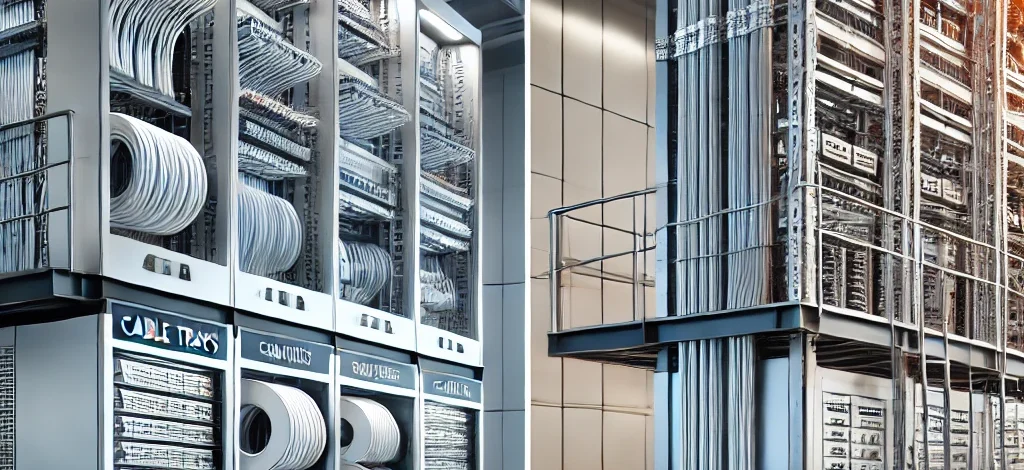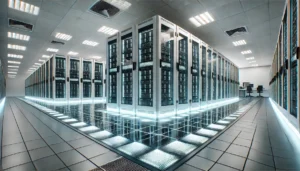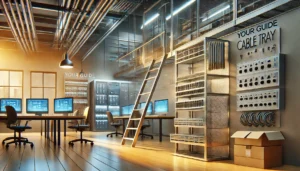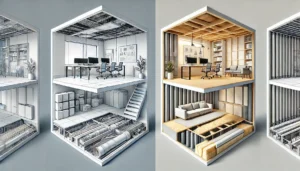Understanding the Differences Between Cable Trays and Cable Ladders
Discover “Understanding the Differences Between Cable Trays and Cable Ladders,” a comprehensive guide that demystifies these essential components of electrical and data cable management systems. Learn about their unique structures, applications, and benefits to make informed decisions for your projects.
Understanding the Differences Between Cable Trays and Cable Ladders
In the realm of cable management, the right system can make or break the efficiency, safety, and longevity of your electrical installations. This is where cable trays and cable ladders come into play. While they may seem similar, understanding their differences is essential for selecting the optimal solution for your needs.
Cable trays and cable ladders are integral to industrial, commercial, and residential settings. They ensure organized cable routing, provide mechanical support, and protect cables from external factors. However, each system has distinct features, advantages, and best-use cases that cater to specific environments and project requirements.
This guide unpacks the essential distinctions, offering valuable insights into their structure, design, installation, and use. Armed with this knowledge, you’ll be better equipped to enhance your cable management strategy and elevate the overall efficiency of your operations.
Structural and Design Differences
Cable Trays
Cable trays are robust platforms designed to support and organize multiple cables. They come in various types, including solid-bottom, perforated, wire mesh, and channel trays. Each type serves a distinct purpose, such as maximizing airflow, preventing debris accumulation, or providing high load-bearing capacity.
Cable Ladders
Cable ladders, on the other hand, consist of two longitudinal side rails connected by rungs. This design ensures excellent ventilation and heat dissipation for heavy-duty cables, making them a preferred choice for industrial setups and high-temperature environments.
Key Features and Applications
Cable Trays
- Ideal For: Small to medium-sized cable installations in offices and commercial buildings.
- Advantages: Enhanced cable protection, customizable designs, and support for various cable types.
- Materials: Typically made from steel, aluminum, or fiber-reinforced plastic.
Cable Ladders
- Ideal For: Large-scale industrial installations.
- Advantages: High strength, excellent cable ventilation, and suitability for heavy cables.
- Materials: Commonly fabricated from galvanized steel or stainless steel for durability.
Specifications Table
| Feature | Cable Trays | Cable Ladders |
|---|---|---|
| Material | Steel, Aluminum, FRP | Galvanized/Stainless Steel |
| Typical Applications | Offices, Commercial Spaces | Industrial, Outdoor, Heavy Duty |
| Load-Bearing Capacity | Medium | High |
| Ventilation | Limited | Excellent |
| Installation Complexity | Low to Medium | Medium to High |
| Flexibility | High | Moderate |
| Fire Resistance | Moderate | High |
| Maintenance Requirement | Low | Low to Medium |
| Resistance to Corrosion | High (Material Dependent) | High (Material Dependent) |
| Cable Access | Easy | Moderate |
| Heat Dissipation | Limited | High |
| Standard Lengths | 2-6 meters | 3-6 meters |
| Cost | Moderate | High |
| Environmental Suitability | Indoor Mostly | Indoor and Outdoor |
| Compliance with Standards | NEMA, IEC | NEMA, IEC |
| Durability | High | Very High |
FAQs
1. What is the primary difference between cable trays and cable ladders? Cable trays are flat platforms ideal for organizing and protecting cables, while cable ladders feature a ladder-like structure for better ventilation and heavy-duty applications.
2. Can cable trays and cable ladders be used together? Yes, they can complement each other in a hybrid system to cater to varied cable management needs.
3. Which is better for outdoor applications? Cable ladders are better suited for outdoor installations due to their durability and excellent ventilation.
4. How do I choose the right material? Consider the installation environment. For example, aluminum resists corrosion well in moist environments, while galvanized steel offers robust durability in industrial setups.
5. Are these systems customizable? Both cable trays and ladders can be customized for specific applications, including dimensions, load capacity, and materials.
Why Choose “Understanding the Differences Between Cable Trays and Cable Ladders”?
This guide is an essential resource for engineers, contractors, and project managers aiming to optimize their cable management strategies. It simplifies technical distinctions, offers practical advice, and helps identify the best solution for diverse applications.
Benefits include:
- Clear explanations of structural and functional differences.
- Practical insights into installation and maintenance.
- Assistance in meeting compliance standards for safety and performance.
Pros and Cons Table
| Feature | Cable Trays (Pros) | Cable Trays (Cons) | Cable Ladders (Pros) | Cable Ladders (Cons) |
| Ventilation | Moderate | Limited | Excellent | May not protect cables fully |
| Load Capacity | Medium | Lower for heavy cables | High | Requires precise installation |
| Durability | High | Material-dependent | Very High | Higher cost |
| Installation | Simple | Time-consuming for large setups | Efficient for heavy loads | Requires more effort |
| Cost | Affordable | Limited for high-duty applications | Ideal for industrial setups | Expensive |
|
|
|
|



